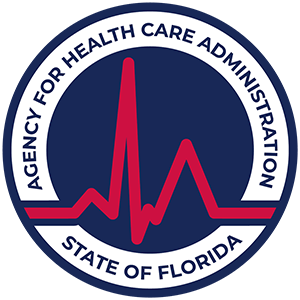Startling Eating Disorder Statistics & Facts
Discover the shocking eating disorder statistics & facts, their impact on mental health, and resources for help.
Top 10 Key Eating Disorder Statistics & Facts
Here are the top 10 key statistics about eating disorders:
- An estimated 28 million Americans have or have had an eating disorder at some point in their life.
- Prevalence rates for DSM-5 eating disorders in young adults: Anorexia Nervosa (0.8 - 6.3% women, 0.1 - 0.3% men), Bulimia Nervosa (0.8 - 2.6% women, 0.1 - 0.2% men), Binge Eating Disorder (0.6 - 6.1% women, 0.3 - 0.7% men), Other Specified Feeding or Eating Disorders (0.6 - 11.5% women, 0.2 - 0.3% men), Unspecified Feeding or Eating Disorders (0.2 - 4.7% women, 0 - 1.6% men).
- Gender and sexual minorities are at higher risk of eating disorders.
- Eating disorders are among the deadliest mental illnesses, second only to opioid overdose.
- Psychological impact of eating disorders includes symptoms such as depression, anxiety, obsessive-compulsive behavior, and suicidal ideation.
- Eating disorders affect people of all genders, ages, classes, abilities, races, and ethnic backgrounds.
- Transgender individuals report a greater prevalence of eating disorder symptoms compared to cisgender individuals.
- Eating disorders can affect people across the ethnic and racial spectrum.
- Men, boys, and gender diverse individuals may experience more barriers to accessing support for eating disorders.
- Eating disorders do not discriminate and can affect anyone, regardless of gender, ethnicity, or race.
The Scope of Eating Disorders
Eating disorders are complex mental health conditions that can have serious consequences for physical health and day-to-day functioning. This section aims to shed light on their prevalence and the impact they have on mental health.

Prevalence in the US
In the United States alone, an estimated 28 million Americans have or have had an eating disorder at some point in their life Healthline. A comprehensive analysis revealed the following prevalence rates for DSM-5 eating disorders in young adults:
Additionally, the data indicates that gender and sexual minorities are at higher risk of eating disorders PubMed. These figures highlight the widespread nature of eating disorders and the need for comprehensive strategies to prevent, treat, and manage these conditions.
Impact on Mental Health
Eating disorders, while often perceived as solely physical health conditions, are primarily mental health disorders. In fact, they are among the deadliest mental illnesses, second only to opioid overdose Healthline. The psychological impact of eating disorders can be severe, with individuals experiencing symptoms such as depression, anxiety, obsessive-compulsive behavior, and suicidal ideation.
Moreover, eating disorders affect people of all genders, ages, classes, abilities, races, and ethnic backgrounds, indicating that these illnesses extend beyond personal choices NEDIC. This widespread impact calls attention to the importance of mental health support and intervention in managing and treating these disorders.
In conclusion, the prevalence and mental health impact of eating disorders underline the need for greater awareness, comprehensive treatment approaches, and ongoing research into these complex mental health conditions. It's also crucial to remember that recovery from an eating disorder is possible, and support is available for those who need it.
Types of Eating Disorders
Eating disorders are complex mental health conditions that can have serious implications for an individual's physical health and emotional well-being. There are several types, each with distinct characteristics and symptoms. This section will explore three common types: Anorexia Nervosa, Bulimia Nervosa, and Binge Eating Disorder.
Anorexia Nervosa
Anorexia Nervosa is characterized by an unhealthy low body weight, a fear of gaining weight, and unrealistic views of weight and shape. Individuals with anorexia often view themselves as overweight, even when they are dangerously underweight.
Common behaviors of individuals with anorexia include limiting caloric intake, cutting out certain food groups, exercising excessively, using laxatives, or inducing vomiting after eating. These harmful practices often lead to severe health problems, making anorexia one of the most dangerous eating disorders.
Bulimia Nervosa
Bulimia Nervosa, on the other hand, involves episodes of binge eating followed by purging, which may involve vomiting, excessive exercise, fasting, or the use of laxatives [1]. Individuals with bulimia are often preoccupied with weight and body shape and may have harsh self-judgments about their personal appearance.
Unlike anorexia, individuals with bulimia usually maintain a normal weight or may be slightly overweight. However, the continued cycle of binge eating and purging can lead to severe damage to the digestive system, heart, and other organs.
Binge Eating Disorder
Binge Eating Disorder is currently the most prevalent form of eating disorder and one of the most common chronic illnesses among adolescents [2]. This disorder involves eating large amounts of food rapidly, feeling a lack of control over eating, and experiencing guilt, disgust, or shame afterward.
Unlike bulimia, episodes of binge eating are not followed by purging. However, individuals may try to severely limit their eating at other times, leading to an unhealthy cycle. Binge eating disorder often leads to obesity and related health problems, including heart disease and type 2 diabetes.
Each of these types of eating disorders requires professional treatment and support. If you or someone you know is struggling with an eating disorder, it's crucial to seek help from a healthcare provider. Understanding the unique characteristics of these disorders is a first step in recognizing their impact and the need for intervention.
Demographics & Eating Disorders
Eating disorders are pervasive and can affect individuals across various demographics. The impacts are felt by people of all genders, ages, races, religions, ethnicities, sexual orientations, body shapes, and weights. However, the representation in eating disorder research often lacks diversity, limiting the understanding of these conditions in diverse populations.
Gender & Eating Disorders
While eating disorders have traditionally been associated primarily with girls and women, an increasing body of research underscores the imperative to understand the role of gender and sex in eating disorders.
The prevalence of eating disorders in the general population ranges between 1% and 5%, with men representing between 17% and 43% of eating disorder cases seen in clinics. Moreover, individuals whose gender identity does not align with their sex assigned at birth, such as transgender individuals, report a greater prevalence of eating disorder symptoms compared to cisgender individuals.
It's worth noting that body image concerns in men often relate to muscularity, and men are more frequently diagnosed with other specified or unspecified eating disorders than women. Additionally, minority stress, including experiences of violence, discrimination, and stigma, may put sexual and gender minority (SGM) individuals at increased risk for eating disorders.
Ethnic/Racial Disparities
Eating disorders can affect people across the ethnic and racial spectrum. However, the lack of representation from diverse groups in research studies limits the available information on these populations [3].
Eating disorders are often diagnosed in teenagers and young adults, but they can affect individuals at any age. Despite some types of eating disorders being more common in women and girls, they affect people across all genders. For instance, transgender, non-binary, and gender diverse youth report higher rates of eating disorder symptoms than cisgender youth [5].
It's important to recognize that men, boys, and gender diverse individuals may experience more barriers to accessing support for eating disorders and may be less likely to be diagnosed. These individuals may find it challenging to discuss their eating disorder symptoms due to concerns about stereotypes or fear of judgment.
In summary, eating disorders do not discriminate and can affect anyone, regardless of gender, ethnicity, or race. More representation in research and awareness campaigns can help in the early detection and treatment of these disorders across all demographics.
Risk Factors & Causes
Understanding the risk factors and causes of eating disorders is crucial in developing effective prevention and treatment strategies. As per the National Eating Disorders Association, eating disorders are complex mental illnesses that result from a combination of biological, psychological, and sociocultural factors. Here, we delve into these contributing elements.
Biological Factors
Biological factors play a significant role in the development of eating disorders. These can include genetic predisposition, hormonal imbalances, and irregularities in certain brain structures. Although research is ongoing, it's clear that these biological influences can make some individuals more susceptible to developing an eating disorder.
Psychological Factors
Psychological factors also contribute significantly to the onset of eating disorders. An integrative review highlighted seven major psychological theories contributing to the development of these disorders. One systematic review and meta-analysis found a significant association between perfectionism and binge eating, indicating a potential risk factor for the development of eating disorders.
Sociocultural Influences
Sociocultural influences, such as societal beauty standards and peer pressure, can also contribute to eating disorders. Research has shown a relationship between binge drinking and binge eating in adolescence and youth, suggesting a potential link between substance use and eating disorders.
It's important to note that these factors do not guarantee the development of an eating disorder, but rather increase the risk. Eating disorders are complex and multi-faceted, with each individual experiencing a unique combination of risk factors. Understanding these factors can help in early detection, intervention, and prevention efforts.
Treatment & Support
Support and treatment are critical elements in the journey towards recovery from eating disorders. This section focuses on the resources available, including national helplines and peer support services.
National Helplines & Resources
For those dealing with disordered eating and related concerns, National Eating Disorders Information Centre (NEDIC) provides a national toll-free helpline and live chat services. These platforms offer resources, referrals, and support to individuals affected directly or indirectly by eating disorders, not just in the US, but also across Canada.
NEDIC's outreach and education programs focus on the awareness and prevention of eating disorders, food and weight preoccupation, and disordered eating. These programs aim to promote critical thinking skills, and they target children, youth, and professionals. These resources are available online and in the Greater Toronto Area.
NEDIC is committed to supporting individuals experiencing eating disorders or disordered eating. The organization emphasizes that bodies do not have to conform to certain appearance ideals to deserve respect and care. This commitment to inclusivity is reflected in the care they provide [9].
Peer Support Services
Peer support services can also play a crucial role in recovery from eating disorders. The National Association of Anorexia Nervosa and Associated Disorders (ANAD) is a donation-based recovery community that offers these services free of charge. These services are accessible to individuals struggling with eating disorders, regardless of age, race, gender identity, sexual orientation, or background.
ANAD provides support services tailored to different demographics including children, young adults, males, older adults, and veterans. This comprehensive approach allows the organization to address the unique needs of various demographics affected by eating disorders.
The availability of these national resources and peer support services is crucial in addressing the issue of eating disorders. By offering accessible, inclusive, and comprehensive support, these organizations play an important role in dealing with the challenges presented by eating disorders.
Long-Term Effects & Awareness
Eating disorders are not only prevalent, but they also have profound impacts on individuals' lives. The effects are far-reaching, involving both physical health and mental well-being. Raising awareness about these conditions is crucial, and a clear understanding of the media portrayal can help to demystify and destigmatize eating disorders.
Health Consequences
Eating disorders can lead to serious health conditions affecting both physical and mental health. These include problems in how individuals think about food, eating, weight, and shape. If not treated effectively, eating disorders can become long-term problems and, in some cases, can result in death.
The impacts of various types of eating disorders are extensive:
- Anorexia nervosa often leads to severe health problems due to an unhealthy low body weight and unrealistic views of weight and shape. Individuals with this disorder may limit calories, cut out certain foods, exercise excessively, use laxatives, or induce vomiting after eating.
- Bulimia nervosa includes episodes of binge eating followed by purging, which may involve vomiting, excessive exercise, fasting, or the use of laxatives. Individuals with this disorder are preoccupied with weight and body shape, and may have harsh self-judgments regarding personal appearance [1].
- Binge-eating disorder involves eating large amounts of food rapidly, feeling a lack of control over eating, and experiencing guilt, disgust, or shame afterward. This disorder is not followed by purging, but individuals may try to severely limit their eating at other times, leading to an unhealthy cycle.
- Avoidant/restrictive food intake disorder involves extremely limited eating or avoidance of certain foods. This may not meet daily nutrition needs, leading to health problems. This disorder is more common in younger children and can result in significant weight loss or failure to gain weight.
Media Portrayal & Education
The portrayal of eating disorders in media can often be misleading. Some individuals view eating disorders as a choice rather than serious biological illnesses. However, it is important to note that eating disorders can affect people of any age, race, gender, or sexual orientation. They are often diagnosed in teenagers and young adults, but many individuals are first diagnosed with an eating disorder in later adulthood. Sometimes, the first signs and symptoms develop at a much younger age.
While some types of eating disorders are more common in women and girls than in men and boys, eating disorders affect people of all genders. Transgender, non-binary, and gender diverse youth report higher rates of eating disorder symptoms than cisgender youth. However, men, boys, and gender diverse individuals may experience more barriers to accessing support for eating disorders and may be less likely to be diagnosed with an eating disorder. These individuals may find it hard to discuss their eating disorder symptoms, potentially due to concerns about stereotypes or fear of judgment.
To combat the harmful effects of eating disorders, it is crucial to raise awareness, educate the public, and remove the stigma often associated with these conditions. This includes accurate media portrayals, comprehensive education about the reality of these disorders, and the promotion of resources and support for those affected.














.svg)








